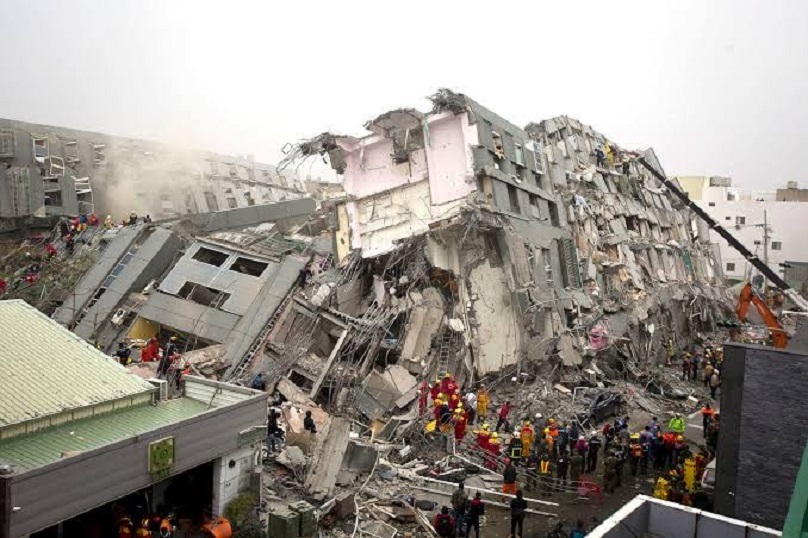
A major earthquake of magnitude 7.4 struck the eastern parts of Taiwan on April 2nd and caused less than 100 casualties. In contrast, the magnitude 7.6 earthquakes of 2005 in Muzaffarabad, Pakistan, caused more than 80,000 deaths, indicating that Taiwan was well prepared and Pakistan was not. Since the devastating earthquake of 2005, urbanization and population growth have increased, particularly near vulnerable zones such as unstable mountainous slopes, riverbeds, and other water bodies.
Taiwan offers many lessons and opportunities for Kashmir. It has a similar tectonic setting, with a prominently developed mountainous region pierced by several active faults. It has narrow valleys, which are different from the broad valleys of Kashmir. Geologically, Kashmir is a more dangerous earthquake hazard setting than the narrow valleys of Taiwan because of the huge population density, potential for liquefaction-related hazards, and so on. More importantly, the critical ingredients for building earthquake-resistant built environments to secure life and assets from earthquake hazards are missing. It is the major difference that differentiates well-prepared Taiwan from unprepared Kashmir. Imagine a similar magnitude of quake as was recorded in Taiwan hitting Kashmir; the expected casualties would be more than 50,000.
What are we waiting for? Kashmir’s tectonic structure indicates that major earthquakes in the region can occur anytime. The exact timing is impossible because available knowledge and technological advancement do not allow that. It is a global concern where earthquake prediction remains impossible, even for the most technologically sophisticated earthquake-vulnerable nations such as Japan, the USA, New Zealand, etc. All these nations started a campaign long ago to secure life from earthquakes and related hazards by following strict building codes, which have minimised losses and damages during major earthquakes, which we have observed over the decades of their scientific and engineering progress. That campaign has yet to start in Kashmir. Delaying tactics are extremely dangerous and paint a grim picture of the region during an impending quake of magnitude seven and above.
I have been writing articles on earthquake hazards for more than a decade now, as many other scientists and researchers do, and most of it is published by Kashmir Observer, which has taken a leading role in disseminating scientific information vital for the security and safety of our societies from hazards, in particular, earthquakes and floods. Yet, whenever I visit India, I fail to understand why our buildings do not follow the standard earthquake safety building procedures and practices that will save lives during earthquakes. I have been posing this question to myself and discussing it with several scientists, students, and people in Kashmir, which made me conclude that the changes are difficult to make but are not impossible. The mindset is not ready to leap towards a new building practice where some previous social norms may have to be abandoned for good. For example, including well-trained architects and engineers from some of the best institutes in the world to replace the existing ones, who are locally trained, and most of them are not even formally trained at universities, etc. For example, most of the residential buildings I have witnessed in Anantnag, where I come from, are designed and constructed by local architects and other engineers, who have often not been trained in a formal engineering institution. It is a huge problem, and the current norm ought to be replaced by professional engineering design and construction.
The government must adopt a resolution to carefully monitor the competence of engineering design and construction patterns to allow systematic replacement procedures for the greater good. The recently concluded 6th World Congress on Disaster Management (WCDM) in Dehradun also recognized the need to change the existing practices for good. The world’s scientific community and people from diverse backgrounds emphasized the need to reevaluate the existing norms in preparation for a better future to effectively combat the risks posed by earthquakes, floods and other hazards.
Our regions are prone to various hazards, and earthquakes are the most dangerous because of their unpredictable nature, which gives us sleepless nights. Therefore, it is good for our societies to work towards preparedness and making our surroundings an abode of peace. We can do it; it costs what is easily affordable to many and possible for others with the help of government and private agencies. We must start to navigate the route of hazard preparedness and disaster resilience in the built environment for the better of our regions, and to accomplish this enormous task; the government must play a critical role by monitoring, facilitating, and rebuilding the infrastructure in the entire country, especially, the most vulnerable regions such as Jammu, Kashmir, Ladakh etc.
- Views expressed in the article are the author’s own and do not necessarily represent the editorial stance of Kashmir Observer
Follow this link to join our WhatsApp group: Join Now
Be Part of Quality Journalism |
Quality journalism takes a lot of time, money and hard work to produce and despite all the hardships we still do it. Our reporters and editors are working overtime in Kashmir and beyond to cover what you care about, break big stories, and expose injustices that can change lives. Today more people are reading Kashmir Observer than ever, but only a handful are paying while advertising revenues are falling fast. |
| ACT NOW |
| MONTHLY | Rs 100 | |
| YEARLY | Rs 1000 | |
| LIFETIME | Rs 10000 | |










